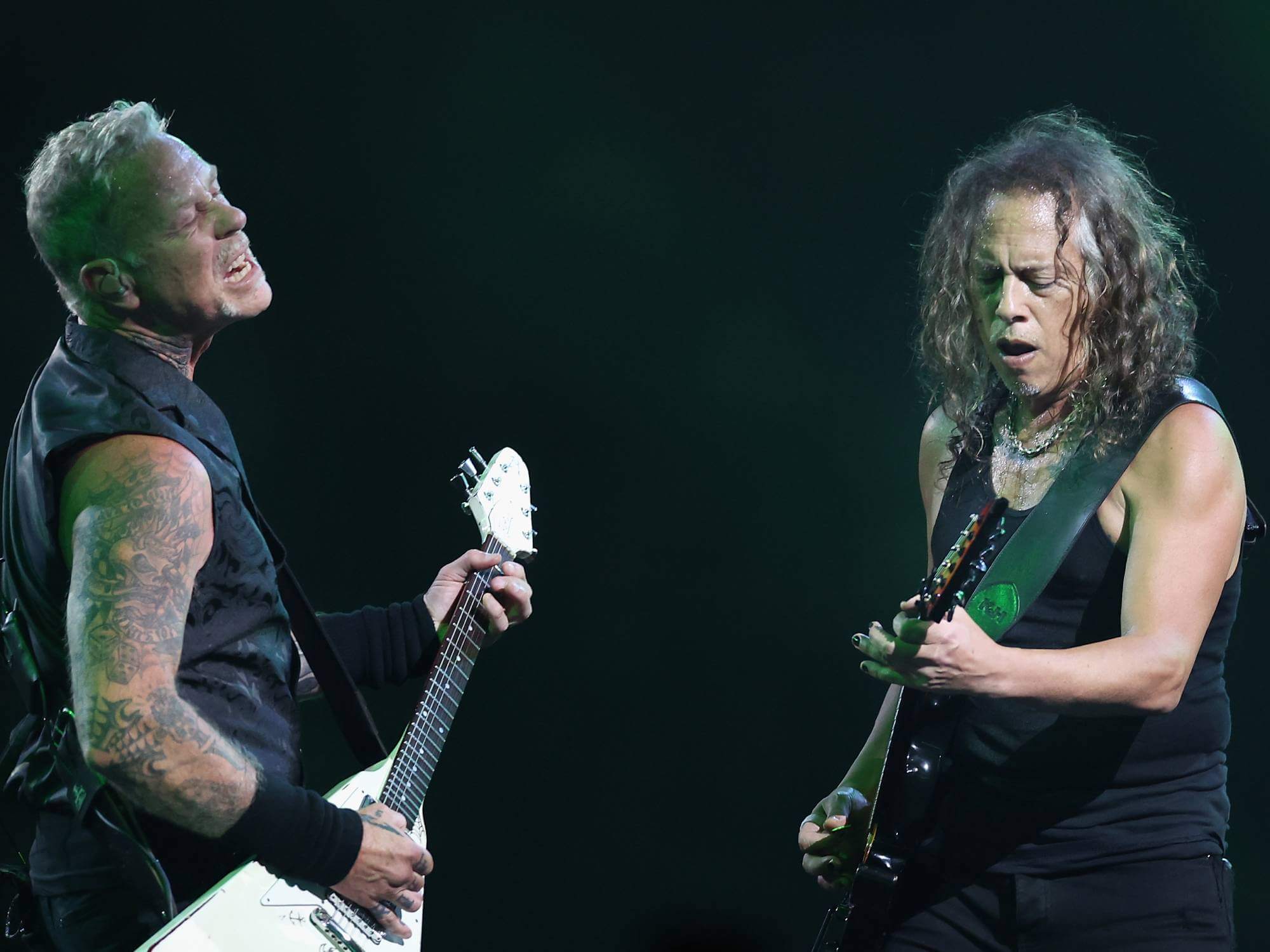“All this stuff is cheaper to ship around, it’s more reliable, and all the rigs now sound exactly the same”: Metallica’s guitar tech on the band’s switch from amps to digital modellers
Chad Zaemisch says the band’s trip to play in Antarctica in 2013 pushed them towards digital modellers, and they’ve stuck with them ever since.

Metallica’s James Hetfield and Kirk Hammett. Credit: Christian Peterson/Getty
Metallica‘s guitar tech Chad Zaemisch has explained why and how the band switched from conventional guitar amps to digital modellers.
In an interview with RJM Music Technology Inc, Zaemisch is asked whether he does all the rig building or if he just maintains the guitar setups for James Hetfield and Kirk Hammett.
“We had just put our racks together, and we went from the typical analog guitar amps and cabinets — we had these giant, huge isolation cabinet boxes and stuff that we used to have mics in there, and that’s what I inherited,” he says. [via Killer Guitar Rigs]
“So I came in, and this stuff is all plugged in like this, like, ‘Okay, just maintain it. That’s great.’”
Several years ago, Metallica switched over to a more digital set-up in the form of Fractal Audio’s Axe-Fx modellers. “We had to rethink a bunch of stuff,” Zaemisch recalls. “I got a lot more familiar with this stuff.”
Their transition to digital began in 2013 with Metallica’s famous trip to Antarctica, lovingly known as “Freeze ‘Em All.”
“Matt Picone [of Fractal Audio] came out and helped us to transition into this stuff because we actually had to go play a show in Antarctica,” says Zaemisch. “That’s why we couldn’t bring any amps, all the people at the show that we brought with us on the ship wore headphones, there was an environmental issue too, where you can’t disturb the wildlife.”
For these reasons, huge amp racks and conventional cabinets weren’t particularly logistics-friendly, so a more digital option became more attractive.
“And I gotta actually give James a lot of credit because it was a big deal to give up your typical analog amps,” Zaemisch reasons. “We got an old-school band, and it’s all about the loud amps, and James was really like, ‘Do we continue to use these?’”
He also goes into more detail about the benefits of digital modellers. “All this stuff is cheaper to ship around, it’s more reliable, and all the rigs now sound exactly the same, rather than analog amps being finicky. It made a lot of sense. I was all for it because anytime I can plug my computer into my equipment and manipulate it,” he explains.
“I’m all for it because it was starting to get boring, just taking strings off, putting strings on for bands, and plugging a couple of things in it. You gotta be really creative when doing that. So, once we got into that, then yeah, we started from scratch and built up presets.”
“Then you move to the next better thing that comes out, improvements and things. So yeah, we’re all pretty well, we help each other, but we do it ourselves just to get good sounds.”
“And it was actually nice because, for me, I went from inheriting what the guitar rig was sounding like and just maintaining it to now being responsible for what it sounds like, having more invested in it.”
He also weighs in on the debate over whether digital modellers are better. “Is it better? When it sounds good, and people will tell you it sounds good, it’s because of the work you did directly. So yeah, we do it all. And then if there’s a problem, we can help each other. If there’s something new that has to happen, we know exactly where to go in, and fix it, or change it, or how to create the new stuff.”
